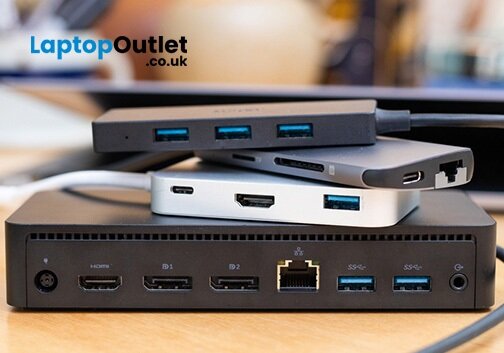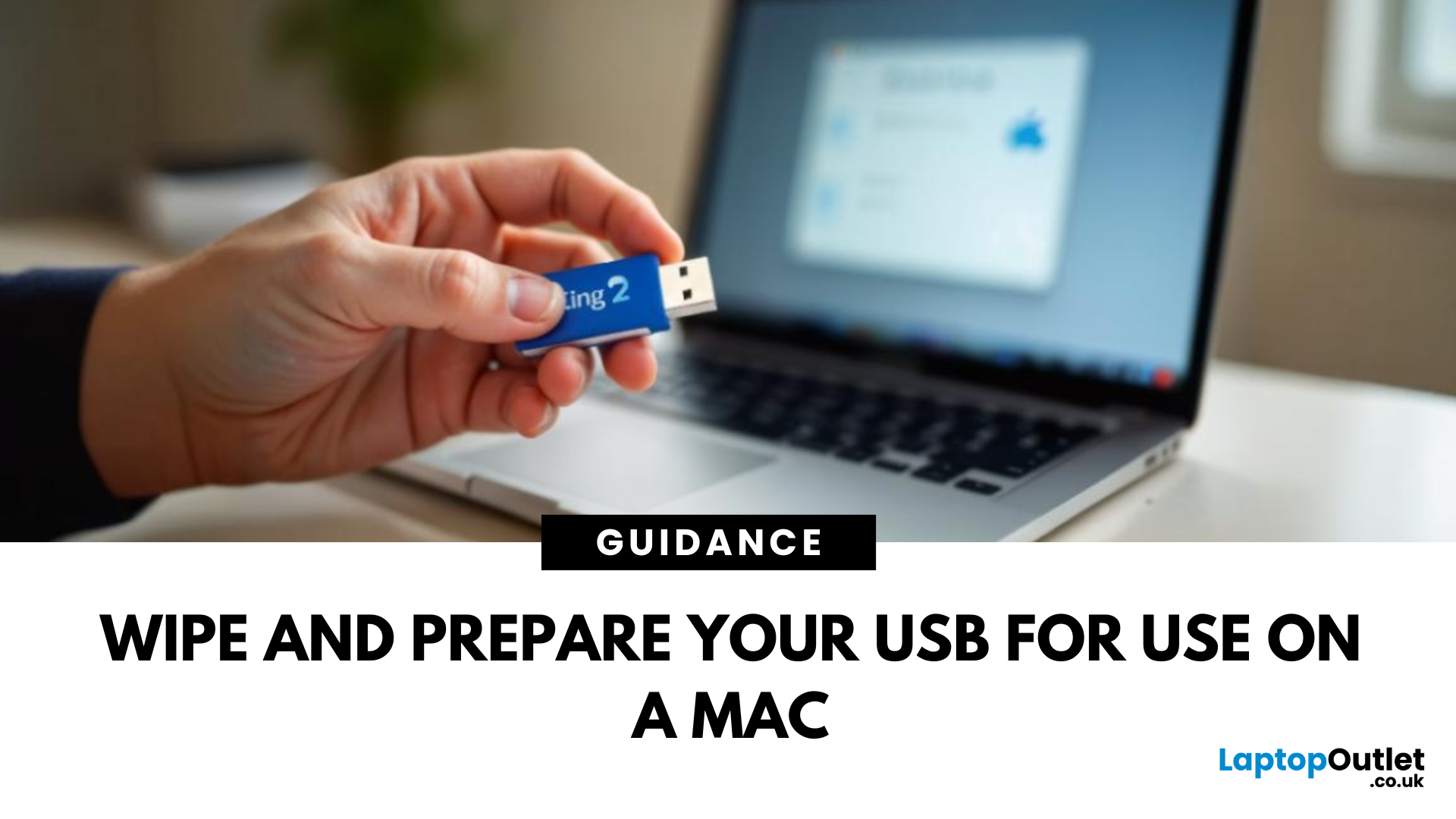What Is a USB Flash Drive or Thumb Drive

Small Device, Big Function
You’ve probably used a USB flash drive or thumb drive before—but what exactly are they? These small but mighty devices are essential for storing and transferring data quickly and easily. Let’s unpack what a USB flash drive is, what it does, and why it’s still so popular in 2025.
1. What Is a USB Flash Drive?
A USB flash drive (also called a thumb drive, pen drive, or memory stick) is a small, portable storage device that connects to your computer or laptop via a USB port.
Key Characteristics:
Uses flash memory (no moving parts)
Plugs directly into USB-A or USB-C ports
Often pocket-sized and lightweight
The term "thumb drive" comes from its compact size—similar to a human thumb
2. What Is It Used For?
Storing documents, photos, videos, and music
Transferring files between devices
Backing up important data
Creating bootable drives for OS installations (like Windows 11)
3. USB Flash Drive vs External Hard Drive
|
Feature |
USB Flash Drive |
External Hard Drive |
|
Size |
Compact/pocketable |
Larger/bulkier |
|
Capacity |
Up to 1TB (typically) |
Up to 20TB+ |
|
Durability |
More durable |
More fragile (moving parts) |
|
Price |
Affordable |
More expensive per TB |
4. Benefits of USB Flash Drives
Portable: Carry your files anywhere
No internet needed: Ideal for offline backups
Fast read/write speeds (especially USB 3.0 and USB-C models)
Plug and play: No setup required
5. Types of USB Flash Drives
USB 2.0: Basic, slower
USB 3.0 / 3.1 / 3.2: Faster speeds (ideal for larger files)
USB-C Drives: Newer models for modern laptops and phones
Dual-Connectors: USB-A and USB-C on the same stick
6. Capacity Options
Available in various sizes, including:
- 8GB
- 16GB
- 32GB
- 64GB
- 128GB
- 256GB and beyond
A 64GB stick can store approx. 10,000 photos or hours of HD video
7. How to Use One
Plug into a compatible USB port
Open the drive on your computer (usually auto-detected)
Drag and drop files to copy or delete
Always eject safely before unplugging
Final Thoughts: Handy and Reliable
The USB flash drive or thumb drive remains a dependable solution for fast, portable storage. Whether you’re a student, professional, or just someone who wants to keep files handy, it's still a top choice in the modern tech toolkit.
Need a new flash drive? Shop reliable USB sticks at Laptop Outlet today—available in all sizes and formats.
FAQs: USB Flash Drives & Thumb Drives
1. Is a USB flash drive the same as a thumb drive?
Yes—both terms refer to the same type of portable storage device.
2. Can I use a USB flash drive to install Windows?
Absolutely. Just make it bootable using tools like Rufus.
3. Are USB flash drives safe for backups?
Yes—but consider encryption or secure models for sensitive files.
4. Can I use the same USB stick on Mac and PC?
Yes—format it as ExFAT for cross-platform compatibility.
5. Do USB drives wear out over time?
Eventually, yes—but most last for many years with regular use.
Read More:
| How Kingston’s Secure USB Drives Keep Your Data Safe While Travelling |
| How to Transfer Large Files Quickly with USB Sticks |
| How to clone Mac system to USB |
Related Articles

January 13, 2022

January 15, 2024
Introduction
Are you frustrated with wires scattered across your desktop and need a simple fix to keep your gadgets charged and organised?
In the world of desktop technology, the USB-C port has emerged as a versatile force with streamlined connectivity and enhanced functionality. As desktop setups become sophisticated, the demand for efficient cable management and expanded connectivity has grown.
Desktop docking stations can enhance productivity, improve ergonomics and ensure convenience for content creation, 3D designers, and CAD engineers. They allow connections between the monitor, keyboard, mouse, storage drive, network port, headphone jack, SD card, and charging ports.
This comprehensive guide explores USB-C docks and their compatibility with various desktop systems. You will learn everything from understanding the fundamentals of USB-C technology to choosing the right dock for your specific desktop needs.
So, let's get into it!
Standard Ports Available in USB-C Docks
USB-C docks are

June 02, 2025
A Fresh Start for Your USB Drive
Whether you're clearing space, fixing errors, or preparing your USB stick for Windows or macOS, formatting is the way to go. Luckily, it’s super simple on a Mac. Here’s a clear step-by-step on how to format a USB stick on macOS.
1. Plug In the USB Stick
- Insert your USB drive into an available port
- If prompted, choose to ignore or open Finder
Make sure to back up any important files—formatting erases everything
2. Open Disk Utility
- Go to Applications > Utilities > Disk Utility
- Or search for Disk Utility via Spotlight (Cmd + Spacebar)
3. Select Your USB Drive
- In the sidebar, click your USB stick (look under 'External')
- Double-check the name and capacity to avoid formatting the wrong drive
4. Click 'Erase'
- At the top of the window, click the Erase button
Format Options:
- Mac OS Extended (Journaled): For Mac-only use
- ExFAT: For both Mac and Windows compatibility
- MS-DOS (FAT): Best for small drives under 32GB
Use ExFAT if you

June 02, 2025
Pocket-Sized Power
A USB stick, also known as a USB flash drive, is one of the most convenient and widely used storage tools available. Small, portable, and incredibly useful—it’s your go-to device for storing, transferring, and backing up files in seconds. But what exactly is a USB stick, and how does it work?
1. What Is a USB Stick?
A USB stick is a small, portable storage device that plugs into a computer or compatible device via a USB (Universal Serial Bus) port. It uses flash memory to store data and requires no external power source.
Also known as thumb drive, flash drive, or pen drive
2. How Does a USB Stick Work?
- Plug it into a USB port on your laptop, PC, or compatible device
- It appears as an external drive
- You can drag and drop files, create folders, and even run portable software
3. Common Uses for USB Flash Drives
- Storing documents, photos, videos, and music
- Transferring files between computers or devices
- Creating system backups or recovery tools
- Installing

June 02, 2025
Start Fresh with a Clean USB Drive
Before selling, giving away, or repurposing a USB stick, it’s important to completely wipe it. This removes all files and helps protect your privacy. Here’s how to safely and securely wipe a USB stick on both Windows and Mac.
1. What Does 'Wipe' Mean?
Wiping a USB stick means:
- Erasing all data stored on the drive
- Optionally overwriting it to prevent file recovery
- Preparing the stick for reuse or disposal
Different from simply deleting files—it removes all traces
2. How to Wipe a USB Stick on Windows
Option 1: Quick Format
- Insert the USB stick
- Open File Explorer > This PC
- Right-click the USB drive > Format
- Choose File System (e.g. FAT32 or exFAT)
- Leave Quick Format checked for speed or uncheck for deep format
- Click Start
Option 2: Command Prompt (Full Wipe)
- Type cmd in Start Menu, right-click Command Prompt > Run as admin
- Enter: diskpart
- Then: list disk
- Identify your USB stick by size, then enter: select disk X (replace

June 13, 2025
Portable Mac Backup, Sorted
Cloning your Mac to a USB stick is a great way to create a full system backup, test new software, or carry a bootable version of macOS. Whether you're preparing for emergencies or upgrading your Mac, here’s how to clone your Mac system to a USB drive safely.
1. What Does Cloning a Mac Mean?
- Copies your entire system, including macOS, files, apps, and settings
- Lets you boot from the USB if your Mac fails or if you want to use another machine
- Ideal for creating a full backup before macOS upgrades
2. What You’ll Need
- A USB stick or external SSD (at least 64GB recommended; more for full system clone)
- A Mac running macOS Ventura or newer
- Cloning software (recommended: SuperDuper! or Carbon Copy Cloner)
Use a fast USB 3.0 or USB-C drive for better performance
3. Format the USB Drive (macOS Journaled)
- Open Disk Utility (Applications > Utilities)
- Select your USB drive in the sidebar
- Click Erase > Format as Mac OS Extended (Journaled)
- Name
